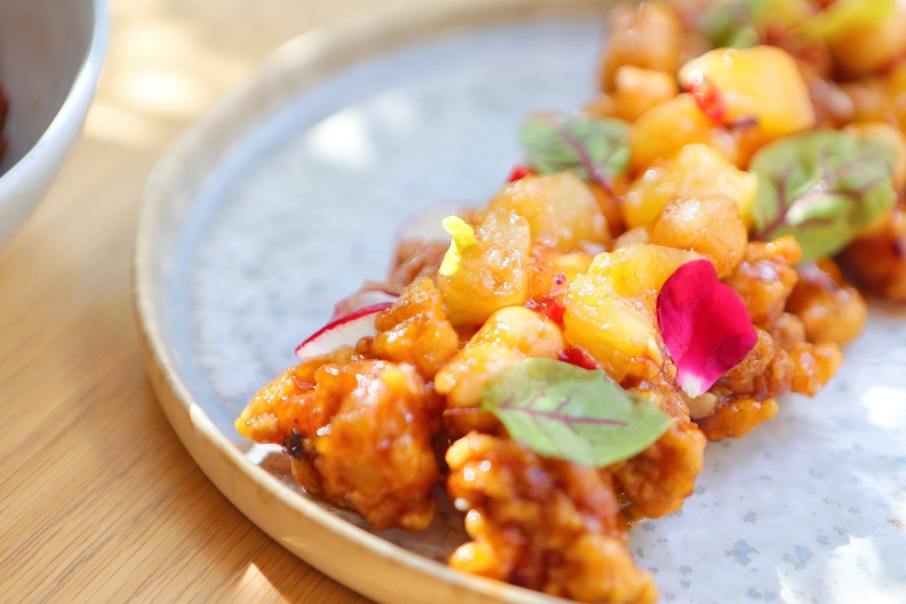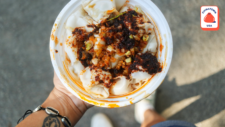
Hunan Slurp Is Telegraphing the Tastes of Home, Now More Than Ever
Hunan Slurp first opened in Manhattan’s East Village in 2018 as a cure for homesickness. Especially after a year like this one, the restaurant, and the idea of cooking from memory, have remained a salve.
Hunan Slurp’s co-owners, Lu Dong and Chao Wang, first came to New York City as students. Dong, who hails from the coastal province of Zhejiang, south of Shanghai, studies computer science, and Wang, from Hunan, is an artist-turned-chef.
While New York is home to many Chinese restaurants, let alone nine different Chinatowns, nothing quite offered them the tastes they longed for. Many Chinese restaurants, to them, seemed outdated in comparison to the restaurants they had back home.
That was the genesis for Hunan Slurp, which took two years to become a reality. Like many immigrants to America before them, Dong and Wang opened a restaurant where they could bring a taste of home to their new home. But they also did it because they wanted to change Americans’ perceptions of what Chinese food, and Chinese restaurants, are today.
“I think that it’s a constant for all immigrants: curing our homesickness,” Dong says. “You cannot teleport to a city you used to live in. The least you can do is cook food with the available ingredients and, somehow, that cures your homesickness.”
With Hunan Slurp, Wang highlighted dishes from Hunan that aren’t just hard to find, but echo his childhood memories of home, like the fish filet mifen. It’s a dish that takes at least a day to make, with wok-fried fish, delicate rice noodles, and a milky-white pork-bone broth. And while mifen is the main draw, as the “slurp” in the restaurant’s name suggests, many other dishes on the extensive menu keep crowds coming back. Take the lotus meatball: shaped by hand with heritage pork and glutinous rice, it resembles a delicate bonbon, topped with truffles.
And lastly, they designed a space that makes you feel more like you’re in an art gallery than a restaurant. It’s a place where gently curved wood beams, meant to bear a likeness to noodles, envelop the entirety of the narrow dining room.

The restaurant opened to critical acclaim, with praise for Hunan Slurp’s tuned-up but still visceral homestyle cooking, its “unusually beautiful” environs, and a plea for more Hunanese chefs to make New York their new home. It quickly became a favorite among nearby NYU students, and among New Yorkers who love slurping mifen and taking bites of Hunan charcuterie at the communal tables.
Then the pandemic struck. In January, Dong and Wang were already hearing about the coronavirus from their families back home in China. Now, with cases continuing to rise in the U.S., it’s their families back home in China who are worrying about them.
They closed the restaurant in March. In May, they reopened it for takeout and delivery.
“It’s increased this homesickness we have now,” Dong says of the pandemic. “We wanted to be with our families during those tough times but, because of the travel ban and other regulations, it’s become difficult for us to travel to China, or for our families to travel to the States.” This May, Dong and his wife were supposed to go back to Zhejiang for a belated wedding ceremony; they met when both were students at NYU.

During the lockdown, however, they were craving food from their childhoods. The restaurant was closed. So they resorted to making stir-fries and hot pot with whatever ingredients they could find at the local markets in Jersey City. That whole experience made Dong contemplate both the origins and the evolution of American Chinese food, and what makes something authentic.
“Once you have very limited access to those ingredients, you start to use more regular ingredients you can buy, and you just focus on cooking those ingredients to recreate a dish that you’re familiar with,” he says. “Maybe it’s a little less authentic, but you still try to keep the flavor as much as you wanted it to have, as much as it’s possible.”
Authenticity was never a primary objective for Hunan Slurp, either. “It’s not possible,” Dong says. “Authenticity can vary from people to people. We have a different ecology of ingredients that we can source here than we would in China. We’re trying to keep it relatively authentic for people who are new to Hunan cuisine, which is a very bold cuisine.”
At one point, Dong and Wang added a nod to American Chinese food to the menu at Hunan Slurp in the form of a reimagined General Tso’s Chicken. After all, the famed Chinese general hailed from Hunan, although the dish that bears his name was actually invented in Taiwan. Hunan Slurp’s version adds fresh chilli “to give the kick this dish needs” and deep-fried rice cakes, two ingredients that are hallmarks of Hunanese cuisine. The dish also draws from another American Chinese standard, sweet-and-sour pork. The sweetness here, however, comes from pineapple and haw flakes, a traditional Chinese candy made from the Hawthorn fruit.
Response to Hunan Slurp’s homage, called General Tsao’s Chicken, was mixed. “To be honest, not a lot of Chinese customers ordered that, but some have grown to like it,” Dong says. “I find non-Chinese customers tend to order it, given they have some familiarity with the dish.”
Even though Dong has been somewhat critical of American Chinese restaurants — he says many have a propensity for “splashing everything with gravy” and that some “could up their game a bit” — the pandemic gave him a new appreciation for them. Or at the very least, it gave him an understanding of how his own restaurant is connected to the Chinese restaurants that came before it. “Older Chinese restaurants are closing and, in their place, newer ones, like ours, are emerging,” he says. “That’s always been the case. Our own concept of a Chinese restaurant, it can still be with these older takeout places and Americanized Chinese restaurants.”

And being a bit removed from Chinatown was one way to distinguish the difference. “That’s one of the reasons why we’re in the East Village,” he says. “We just want to encourage people to just come in and try the food. We’re here to break the stereotype or general conception of what a Chinese restaurant in America is.”
Right now, Hunan Slurp, like many other restaurants across the country, is also just trying to survive.
And yet: Even in the midst of all of this, Dong and Wang and their three other business partners from the restaurant are planning to open a new concept later this year, not far from their current restaurant. It’ll be a bi-level Dumpling Lab, focusing on handmade dumplings like the ones you might find in Shandong, bursting with seafood like mackerel instead of the usual pork, beef, or chicken fillings that you often find.
No matter the odds, they aren’t giving up on their dream of owning restaurants in their new home. Says Dong, “There’s this sense of unfulfillment, to further our concept and mission.”
Deanna Ting is a Resy staff writer. Follow her on Instagram and Twitter. Follow Resy, too.
Discover More

Stephen Satterfield's Corner Table




















